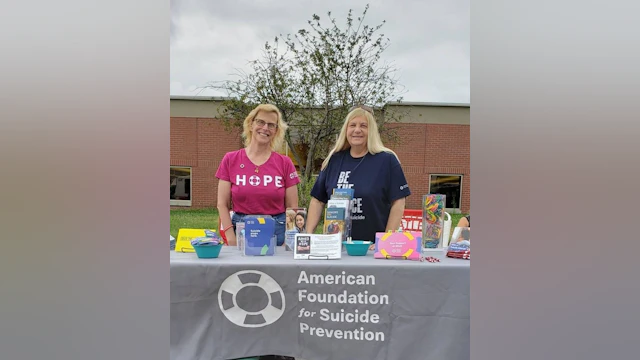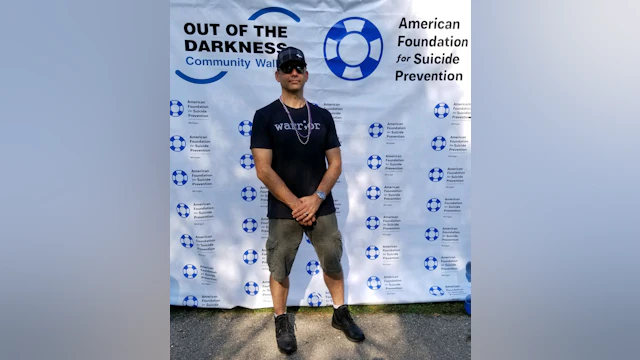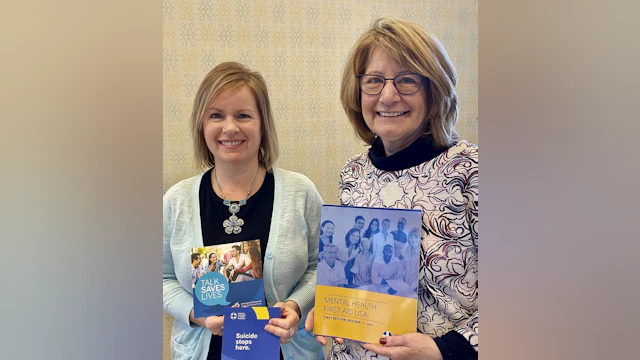The Bold Goal
AFSP has set a bold goal to reduce the U.S. suicide rate by 20 percent.
The American Foundation for Suicide Prevention has taken on the Bold Goal to reduce the rate of suicide 20% by 2025. The initiative, at the core of our 3 year strategic plan, follows a public health approach, as would be appropriate for any health-related leading cause of death.
In order to achieve this Bold Goal, AFSP, together with its board of expert advisors, has examined who are we losing to suicide, how are we losing them, where are we losing them and what we can do to save lives. Based on these findings, AFSP develops and delivers evidence-informed programs to influence systems change, engage employers and businesses, educate the community, and develop key strategic partnerships to drive impact.
Four critical areas have been identified to save the most lives in the shortest amount of time:
Our Bold Goal and the key focus areas outlined below are just one part of our mission to save lives and bring hope to those affected by suicide.
The work we do across all areas of our mission seeks to reduce the rate of suicide in the U.S. From funding suicide prevention research and advocating for policies that save lives, to delivering suicide prevention education and supporting suicide loss survivors, AFSP’s work is the work of saving lives. AFSP also leads efforts to influence public policy to help codify strategies we know save lives. To get involved in AFSP’s efforts to save the most lives in the shortest amount of time, reach out to your local chapter.
Talk Away the Dark PSA
Talk Away the Dark
Firearms
Over half of all suicide deaths in the U.S. occur with a firearm. Yet we know there are measures that can reduce the risk of suicide for someone in crisis. From offering suicide prevention education for retailers, range owners and firearms owners to encouraging safe storage, there are actions we can take to save lives, and there is promising evidence that providing suicide prevention training for those who influence a specific community can reduce the suicide risk for that community.
Through our partnership with the NSSF, we are providing suicide prevention education to thousands of firearms retailers, shooting ranges, and gun owners nationwide. Learn more about firearms and suicide prevention.
Firearms and suicide prevention
Healthcare Systems
Up to 45% of people who die by suicide visit their primary care physician in the month prior to their death. Large healthcare systems spanning both primary and behavioral care are a critical setting where coordinated suicide prevention strategies can have a dramatic impact on lives saved.
AFSP is collaborating with the country’s largest healthcare systems and accrediting organizations to accelerate the acceptance and adoption of risk identification and suicide prevention strategies we know work.
We've worked with the American Academy of Pediatrics to develop a Blueprint for Youth Suicide and are working together on a new project called Project Echo to implement recommendations in the blueprint and equip providers to better care for patients with suicidality.
AFSP is collaborating with the Institute for Healthcare Improvement on a three-year initiative to identify and influence key levers or change required in the healthcare industry in order to save the most lives in the shortest amount of time.
Stories about the Bold Goal
Emergency Departments
39% of people who die by suicide make an Emergency Department visit in the year prior to their death. Emergency departments present a key opportunity to identify and treat the individuals at the highest and most immediate risk for suicide. Basic screening and interventions can provide a safety net for at-risk patients seen in emergency departments.
AFSP worked with the American College of Emergency Physicians to develop a tool for Emergency Physicians called ICare2. This free tool is available for use in emergency rooms across the country.
Learn more about suicide prevention research
Corrections Systems
Incarcerated people are particularly vulnerable to suicide, for a variety of complex reasons. Suicide is the leading cause of death in jails, and suicide in prisons has increased 30% in recent years. We need to change the culture of suicide prevention in our country’s jails and prisons.
AFSP has created Talk Saves Lives in Corrections Settings, Module for Staff, a presentation for corrections staff and is offering it for free.
AFSP collaborated with the National Commission on Correctional Healthcare to create Suicide Prevention Resource Guide, a guide for suicide prevention in corrections.




